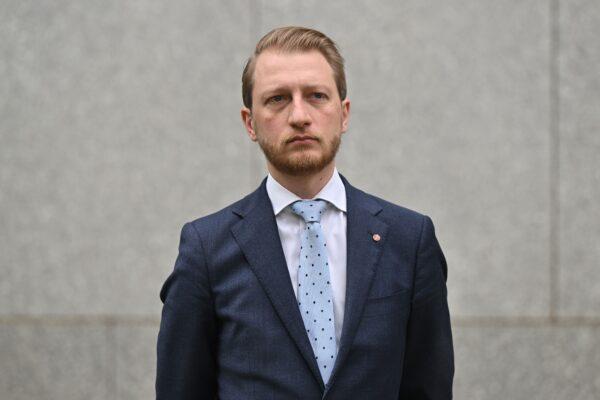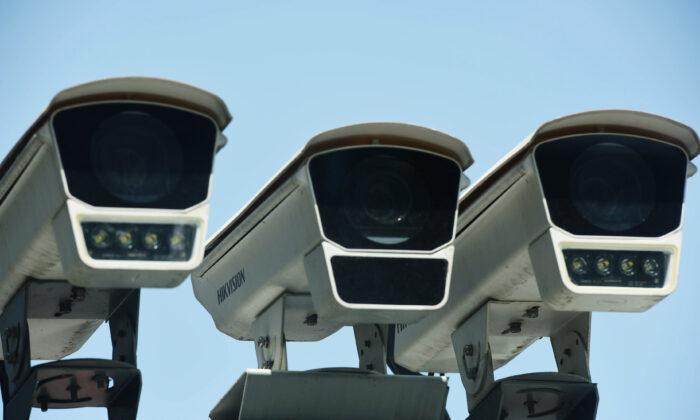Australia has ordered the removal of all Chinese-made surveillance cameras from the country’s government sites “as soon as possible,” in the latest Western move to combat the Chinese Communist Party (CCP)’s overseas technology.
Deputy Prime Minister and Defence Minister Richard Marles announced the order on Feb. 9, following an audit that revealed that almost 1000 Chinese-made surveillance cameras were installed across over 250 sites of Commonwealth departments and agencies, including foreign affairs and defence sites.
“We’re doing an assessment of all the technology for surveillance within the defence estate and where those particular cameras are found. They’ll be removed,” Marles told Australian Broadcasting Corporation (ABC).
“It’s a significant thing that’s been brought to our attention, and we’re going to fix it. It’s obviously been there … for some time and predates us coming into office.”

Audit Shows Commonwealth ‘riddled with CCP spyware’
The move comes after Shadow Minister for Cyber Security & Countering Foreign Interference James Paterson released the findings of a six-month audit of all commonwealth departments. He launched the audit after the Home Affairs Department failed to advise him how many of the Chinese-made devices were installed in government buildings.It’s revealed that the Chinese-made cameras and security equipment were found in almost every department except Prime Minister and Cabinet and the Agriculture Department.
The Attorney-General’s Department had 195 Chinese-made devices across 29 sites; the Department of Climate Change and Energy had 154; Treasury had 115; Finance 122, and the Department of Social Services 134.
The number of such devices in the Foreign Affairs Department was not revealed, but at least 28 sites were potentially affected.
The Defence Department was not certain about the total number of Chinese cameras but said there was at least one.

Paterson said the federal government buildings were “riddled with CCP spyware.”

“There has been a number of vulnerabilities identified in these products in the past where remote users could gain full control of them, switch on the cameras or switch on the audio, for example,” he told Sky News.
“What’s most important is like Huawei, who was banned from our 5G network, they are beholden to the Chinese Communist Party … Every Chinese citizen and every Chinese company must co-operate with China’s intelligence agencies and must keep that co-operation secret so they could be prevailed upon by the Chinese government.”
The shadow minister urged the Albanese government to take immediate action on the issue.
“So far, the Australian government has announced no plan to do so, although some government departments and agencies, including the National Disability Insurance Agency and the Australian War Memorial, have pledged to remove the devices from their sites,” Paterson said.
“We urgently need a plan from the Albanese government to rip every one of these devices out of Australian government departments and agencies.”
The National Disability Protection Administration decided in December 2022 to remove Chinese-made surveillance equipment at its national office in Geelong, Victoria. A Hikvision CCTV system with 132 cameras and four recorders will be removed by March and replaced with a vetted system.
In addition, Kim Beazley, the Australian War Memorial’s newly appointed chair and former Labor defence minister confirmed on Feb. 8 that the museum was removing Chinese-made surveillance equipment as a precaution.
Defence Minister Warns Against Overreacting
Marles said the issue was important, that the Defence Department was searching for other equipment and would rip them out if it found any.“This is an issue … we’re doing an assessment of all the technology for surveillance within the defence estate, and where those particular cameras are found, they’re going to be removed,” he told ABC.
However, the minister warned against overreacting.
“I don’t think we should overstate [the seriousness], but it’s a significant thing that’s been brought to our attention, and we’re going to fix it,” he said.

“We act in accordance with Australia’s national interest,” Albanese said at a press conference on Feb. 9. “We do so transparently. That’s what we’ll continue to do.”




